Healthcare Industry Reports
Healthcare organizations across the globe face difficult decisions in selecting partners and solutions that will produce the best outcomes. Our team of researchers is committed to helping you answer the most pressing industry questions using insights that come directly from your peers.

Features
The KLAS research team publishes 55+ insight-driven reports per year, covering the most pressing questions facing healthcare technology today. The executive summaries of our reports are available to healthcare providers and payers at no cost, in exchange for a willingness to share their experiences with KLAS. Each report contains the following core features:
Easy to digest
Our goal is to make engaging with our data fast and easy for you. All of our key report findings are in short, two-page executive summaries with what you need to know at a glance. For those who need in-depth background information, we offer our extensive write-ups with detailed insights, demographics, report methodology, and custom commentary through our Partner-level memberships.
Key findings and analysis from in-depth peer interviews
Through the lens of provider experiences, the KLAS team evaluates the current success of healthcare technologies and services and projects future trends. Along with this analysis, KLAS reports include frameworks that help to make sense of complexities in care delivery and benchmark the vendors' positions to help.
Advice and insights from actual healthcare professionals
Each report is filled with recommendations and best practices from actual customers that KLAS interviews. We carefully validate that each and every product review was given by an actual person directly involved with the solution being measured, so you can trust the insights.
Recently Published Reports
Check out the latest industry trends
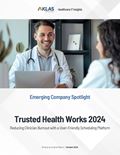
As clinician burnout remains front of mind for those in the healthcare industry, healthcare organizations continue to look for solutions to reduce clinician fatigue and attrition. Trusted Health helps address burnout within healthcare organizations with the Works workforce management platform, providing a customizable and easy-to-use mobile app used for quickly filling open clinician shifts, and its dynamic pricing keeps the solution at a lower cost. This report offers a detailed look at customer experiences with Trusted Health Works.
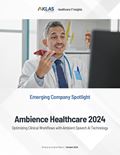
Healthcare organizations continue to evaluate ambient speech AI solutions with the goal of improving clinician well-being, increasing operational efficiencies, and enhancing care quality. Ambience Healthcare offers a voice-enabled, fully automated generative AI solution that is used across various care settings to create clinical documentation and assist with workflow tasks such as code suggestions and pre-charting. This report examines early customer experiences and satisfaction with the product.

New technologies and companies continue to be developed to enhance healthcare, flooding provider organizations with options for technology and services. Amid all the development, vendor partners with significant potential to benefit organizations may be missed. Based on the opinions of 49 industry thought leaders, KLAS’ annual Emerging Solutions Top 20 report seeks to help healthcare organizations identify the new technologies best positioned to impact the Quadruple Aim of Healthcare. This includes (1) ranking emerging solutions by their potential to disrupt the healthcare market and (2) providing insights from participating healthcare leaders into what innovation themes organizations should be aware of as they seek to provide optimal patient care.
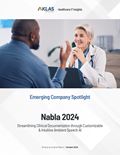
Ambient speech technology continues to be top of mind for healthcare leaders looking to reduce administrative burdens, optimize processes, and—ultimately—help clinicians focus more on patient care. Nabla is a voice-enabled, fully automated generative AI solution that utilizes proprietary large language models to create clinical notes and streamline workflows for various care settings in real time. This report examines customers’ experiences and satisfaction with the product.

For healthcare systems, claims management is a crucial part of realizing revenue, but the complexity of claims and payer-provider relationships often make the process difficult. Managed Resources aims to not only provide consistent claims denial attention and reimbursement but also educate provider organizations on claims to reduce future pain points and denials. This report examines the experiences and satisfaction of Managed Resources clients.

As long-term care (LTC) facilities face decreasing reimbursements, changing CMS requirements, and staff turnover, they need software vendors who can provide valuable functionality and support their financial success. Investment in new technology can be cost prohibitive due to LTC facilities’ tight budgets, leading many to stay with their current EHR vendor; despite this, nearly 60% of interviewed organizations are looking to invest in additional technology from their EHR vendor or a third-party vendor to increase their profitability. An update to , this report examines which vendors are best maintaining or improving customers’ sense of value via strong product development and integration quality.

The PACS market in Latin America is evolving—vendors have expanded or reestablished their customer bases in certain countries, and some healthcare organizations are considering replacing products that aren’t meeting expectations. An update to KLAS’ , this report examines vendors’ regional footprint and performance in Latin America. Altogether, customer satisfaction feedback was collected from 127 respondents, representing 95 separate organizations in 12 countries and territories. Insights are examined first for Latin America as a whole, then for Brazil, and then for other countries throughout the region, collectively referred to as “other Latin American countries and the Caribbean.”
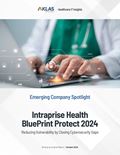
As cyber attacks against healthcare organizations continue to rise, the need to identify software vulnerabilities and close security gaps has never been greater. BluePrint Protect from Intraprise Health can help address these needs by providing automated security workflows, increased risk visibility, and faster third-party risk assessments. This report examines interviewed customers’ experiences with this solution.

EHR purchasing in Latin America has fluctuated over the last few years, initially declining at the onset of the pandemic before rising in 2023, when the total number of acute care beds impacted by an EHR purchase decision was over 62% higher than in 2021. This report provides an update on which vendors are gaining market share and which are best meeting customers’ needs. Altogether, market share data and customer satisfaction feedback were collected from 97 respondents, representing 75 separate organizations in 12 countries and territories. In this report, market share data for Latin America is examined first, followed by customer satisfaction data (when available) in Brazil and in other countries throughout the region, collectively referred to as “other Latin American countries and the Caribbean.”

Across the market, hospice agencies are frustrated that their HIT vendors aren’t prioritizing hospice care as they should, leading to low customer satisfaction that has continually decreased over time for most vendors. While several vendors have recently tried to address long-standing concerns through acquisitions or further development of their hospice product, most respondents want more to be done to allow for strong hospice care. To aid agencies in finding the best solution for their needs in a low-performing market, this report—an update to the —examines which vendors best provide hospice-specific workflows, meet expectations for innovation and development, and support broad functionality through integration.

An individual’s health is determined by a variety of factors, including socioeconomic factors that aren’t treated or monitored within hospitals and clinics (e.g., housing, food access, language barriers, transportation). When patients struggle with these social determinants of health (SDOH), they are more likely to experience compounding health issues that require longer recovery times, increasing costs for both themselves and the healthcare system. Healthcare organizations, payer organizations, community-based organizations (CBOs), government organizations, and HIT vendors can partner to address communities’ SDOH needs and prevent patient conditions from worsening. KLAS’ SDOH Points of Light recognitions celebrate such partnerships’ successes—or “points of light”—in transforming patient and community care.

During the COVID-19 pandemic, many people in Idaho needed access to community and government resources for the first time in their lives. Although many resources were available, most people didn’t know where to find them, and there wasn’t an efficient way to connect people to resources. In this case study, the collaborators created a user-friendly database of available resources that can be used at the individual and organizational level to address community needs.

Following the onset of the COVID-19 pandemic, feelings of hopelessness (as measured by the CDC) increased significantly among high school students in the United States. In 2021, the CDC reported that more than 40% of students felt persistently sad or hopeless. Due to this increase and the fact that caring for a child with a behavioral health condition is a significant expense for families, the collaborators in this case study created a preventive program that identifies and assists at-risk youth and families with SDOH needs.

When seeking care, patients must consider several factors, such as the accessibility, affordability, and quality of that care. LGBTQ+ patients have an additional consideration—whether the provider will be affirming of their sexual orientation and/or gender identity. Many of these patients avoid receiving care because of negative experiences with providers who weren’t affirming or were inexperienced with LGBTQ+ communities. In this case study, Healthgrades partnered with a CBO to improve healthcare experiences for LGBTQ+ patients by increasing their access to affirming providers.

More than one-third of adults in the US have prediabetes, but the vast majority are not aware. Identifying these individuals and helping them prevent the development of type 2 diabetes is a challenge, as many of the factors that influence their risk cannot be addressed within the walls of a hospital or clinic. The CDC’s National Diabetes Prevention Program (National DPP) supports a lifestyle change program that can help improve overall health and lower the risk of type 2 diabetes by 58% (71% for adults over age 60). Yet enrolling and referring individuals, scaling and spreading the interventions, and reporting and analyzing program data can be difficult. The collaborators in this case study developed EHR automation to effectively identify patients at risk for developing type 2 diabetes, created bidirectional referral communication, and established mechanisms and pathways to connect patients with interventions.

In the US, it is common for women to die during or after pregnancy when they are in low-resource settings with limited access to care. There are also other disparities in maternal care. To address these issues, the collaborators in this case study implemented a comprehensive maternal health program that provides personalized care and continuous support for prenatal and postpartum patients. Get Well’s product was used to engage patients via texts and phone calls, and Findhelp’s product was used to connect patients to community resources.

When healthcare organizations have a uniform SDOH screening and referral process, they can provide whole-health care equally across different patient demographics. In this case study, the healthcare organization partnered with Innovaccer and Findhelp to roll out a closed-loop SDOH screening and referral process for pediatric patients that connects them and their caregivers with reliable CBOs to improve their long-term health.
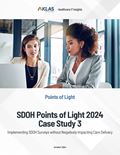
In this case study, Southern California Permanente Medical Group (SCPMG) and Kaiser Foundation Health Plan/Hospitals (KFHP/H) envisioned a better way to address the total health of more than 4.5 million covered lives. Thus, they created a self-service SDOH survey that helped them identify social health gaps without requiring direct patient interaction with the care delivery system and without adversely impacting clinicians’ care delivery workflows. The collaborators also used their combined clinical and regional insights, IT and financial resources, and operational planning methods to connect patients/members with community resources.

Addressing patients’ SDOH needs helps prevent readmissions; however, it can be difficult for organizations to manage treatment plans of high-risk patients and prevent relapses. In this case study, the collaborators worked together to lower readmission rates of complex and high-risk patients. With the help of Epic Compass Rose and a strong care management team, the collaborators achieved their goal by creating holistic treatment plans, referring patients to community programs, and using effective SDOH screenings and interventions.

In this case study, the collaborators worked to address health disparities and promote health equity by improving their screening and referral processes. Parkland Health formed a governance committee to develop comprehensive strategies and advocate for resource allocation. PCCI created a platform that relies on data analytics and machine learning to identify and address socioeconomic factors impacting patients’ health, and Epic’s integration helped care teams easily see patients’ social and clinical data. Additionally, thanks to funding from Center for Medicare and Medicaid Innovation (CMS Innovation Center), community health worker (CHW) positions were created. This initiative reduced ED visits and enhanced patient access to community resources.

Patients with complex care needs are expensive for healthcare organizations to treat; they require more intensive care, and some patients overutilize resources when they are repeatedly readmitted to the hospital. To reduce preventable readmissions, the collaborators in this case study worked together with clinics and community resources to save on costs and align their approach to addressing patients’ social needs. They achieved their goal by using Lightbeam Health Solutions to identify underlying social problems and enhance patient engagement.

Saint Peter’s University Hospital did not have an established SDOH screening process, making it difficult to track and address patients’ SDOH needs. So they implemented screenings and worked with their vendor partner, Lightbeam Health Solutions, to synthesize patient data and create tailored care plans for high-need patients. This data was then shared with Healthier Middlesex to follow up with the patients and connect them with community resources.

Elevance Health and Findhelp partnered to offer the Social Drivers of Health Provider Incentive program (SDoHPIP) to help standardize the identification of social health disparities among Medicaid beneficiaries (thus standardizing the process of connecting those beneficiaries to community resources) and to offer financial incentives to both providers and CBOs to ensure they can close the loop on needs identification and resource referrals. Using this program and the Findhelp platform, PM Pediatric Care has been able to use their access to Medicaid beneficiaries to connect children with local community resources to help strengthen their social health.

It can be difficult for healthcare organizations to track nonclinical factors that impact patients’ health, and even after factors are identified, significant effort is required to connect a patient with relevant programs and resources. In this case study, the collaborators worked with their vendor partner, Unite Us, to identify available resources in the community, provide referrals, and track which patients take advantage of the provided resources.

In recent years, purchasing energy in the population health management (PHM) market has cooled among large acute care organizations—only 10% of interviewed organizations report a recent or in-progress PHM purchase decision. This trend is largely the result of healthcare organizations deprioritizing initial investments in new solutions and instead focusing on cost reduction and improved ROI through vendor consolidation, better data access and utilization, and improved functionality that supports value-based initiatives (i.e., care management, whole-person care, downside risk contracts). Physician-led ACOs don’t always face the same challenges as large acute care organizations (the majority of the sample included in this data set), so they may make decisions differently. With fewer decisions being made for acute care organizations, there is greater pressure on vendors to more thoroughly prove their platform’s capabilities during the RFP process. To help healthcare organizations navigate purchasing decisions in this market, this report draws from 40 purchase decisions validated by KLAS between July 2022 and June 2024 to examine (1) which vendors’ customer bases are growing, being maintained, or decreasing amid market shifts and (2) which factors contribute to current buying energy. Satisfaction data from current customers is also included.

Energy in the smart pump market is high due to the remediation of the BD Alaris pump after a long ship-hold due to several FDA recalls, updated technology in established pumps, and recent FDA approval of next-generation pump technology from several vendors. As a result, many healthcare organizations are making or planning to make purchase decisions sooner than anticipated. To help organizations navigate this evolving space, this report examines customer satisfaction and future plans with smart pump vendors, what elements are driving purchase plans and customer retention, and which vendors are top of mind for purchase decisions.
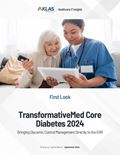
In a hospital, it is essential that diabetic patients’ glucose levels and insulin treatments are carefully reviewed and managed. To avoid mistakes and reduce the need for redundant endocrinology work, healthcare organizations can turn to technology such as TransformativeMed’s Core Diabetes solution. This product aims to provide all relevant diabetes-related patient data in a seamless EHR dashboard. This report offers a first look at the experiences of healthcare organizations currently using Core Diabetes.
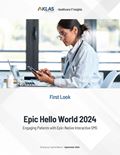
Many healthcare organizations engage with their patients through text messaging. Third-party SMS systems work well but can lack the efficiency and consolidation of a solution native to the EHR. Epic’s new Hello World solution enables users to send notifications, reminders, and other self-service communications from within the Epic platform directly to patients’ phones as text messages. This report offers a first look at the customer experience with Hello World.

As payers, provider-sponsored health plans, and provider organizations continue to grapple with economic and financial pressures, their need for risk adjustment solutions with both retrospective and prospective capabilities remains high. Solutions that provide a strong ROI and have broad capabilities are top of mind for potential customers, who often want to realize better value and consolidate solutions. To understand what factors are influencing purchase decisions and where organizations are investing, this report examines 52 risk adjustment purchase decisions validated by KLAS between June 2021 and June 2024. Satisfaction data from current customers is also included.
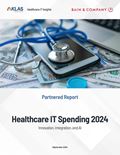
In their third annual report, Bain & Company and KLAS Research explore the trends impacting the Healthcare IT market.

In January 2024, KLAS hosted our first Middle East summit, attended by 44 healthcare representatives and 53 healthcare IT (HIT) vendor and consultant attendees. This two-day summit featured the first non-US Best in KLAS awards ceremony, celebrating the 2024 Middle East acute care EHR and PACS winners (Oracle Health and AGFA HealthCare, respectively), with presentations from Ministry of Health representatives from the Kingdom of Saudi Arabia, Qatar, and the United Arab Emirates (UAE). Educational sessions that focused on aligning vendors with the needs of Middle Eastern healthcare organizations were also presented. This overview shares data from a pre-summit survey as well as findings from summit discussions regarding healthcare areas that need policy clarification and refinement.

In June 2024, KLAS hosted our annual Global Summit on the shores of Lago Maggiore in northern Italy. At this summit, 128 industry executives—including 70 healthcare representatives from 18 countries and 58 healthcare IT (HIT) vendor and consultant attendees—came together to discuss industry trends. Over the two-day conference, these leaders discussed significant barriers that hinder progress in the healthcare industry as well as areas of potential growth and innovation. This summit overview highlights findings from tabletop discussions that explored how the healthcare industry can better navigate challenges related to artificial intelligence (AI), clinician burnout, and customization.
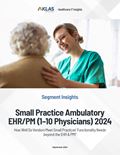
Ambulatory care is an ever-evolving landscape, and small practices (1–10 physicians) are increasingly seeking more from their core EHR and PM vendors. With limited IT resources, small practices need vendors who invest in their success by offering robust technology and guidance to streamline administrative tasks, enhance efficiency, and—ultimately—improve patient care. For a market where most vendors don’t meet all small practices’ functionality needs, this report delves into (1) common third-party solution types used to fill functionality gaps within core EHR and PM solutions, (2) capabilities that small practices want their core vendors to develop, and (3) overall customer satisfaction with their vendors.

Autonomous coding solutions continue to be top of mind for healthcare revenue cycle leaders looking to solve coder staffing challenges, gain process efficiencies, and decrease variability in coding quality. Fathom’s AI-driven medical coding system is designed to help streamline coding work by automatically processing charts and sending medical records directly to billing with no human intervention. This report examines the experiences and satisfaction of provider and vendor customers using Fathom.

Patient education solutions are an increasing focus for healthcare organizations looking to deliver more patient-centric care, as these solutions provide patients with crucial information to help them navigate diagnoses or upcoming procedures. While some organizations produce their own educational content that is then housed in a vendor’s solution (e.g., portal, interactive patient system), . Generally, healthcare organizations are satisfied as they feel their vendors offer reliable, digestible content and reduce the operational burden, though the use of multiple solutions is common to meet all needs. This report—KLAS’ first focused on patient education solutions—(1) examines customer satisfaction with patient education vendors and their provided content and (2) shares insights into the patient education market.
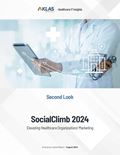
Patients often rely on online reviews to find quality healthcare providers. Recognizing this, healthcare organizations want the ability to enhance their online reputation and deliver targeted advertisements. SocialClimb’s marketing platform helps organizations improve their online presence, advertise effectively, and measure the ROI of their marketing efforts. KLAS first reported on SocialClimb in June 2022, and this Second Look report focuses on how the customer experience has changed over the last two years.

Triage is a crucial process in emergency departments that determines how quickly a patient needs medical attention, greatly impacting patient outcomes and provider efficiency. TriageGO from Beckman Coulter helps automate the historically manual triage process to increase accuracy and throughput via machine learning algorithms. This report validates customers’ experiences with TriageGO.

Healthcare organizations continue to depend on specialized firms to manage their complex claims—specifically, claims for motor vehicle accidents (MVA), out-of-state Medicaid, TRICARE, VA, and workers’ compensation. Notably, several complex claims services firms have recently completed a merger or acquisition, resulting in expanded offerings, deepened expertise, and larger market share. This report looks at client satisfaction in the wake of these mergers and acquisitions, examining how well firms partner with clients and deliver value across different claim types.

Amid continuing trends of software consolidation, data archiving solutions enable healthcare organizations to archive and access historical data from retired legacy software. Many organizations are archiving more solutions to reduce costs and the number of data sources they need to access. While data archiving vendors can archive nearly any solution, they do often focus on specific markets and project sizes. To provide greater transparency around which markets these vendors serve and how well they support their customers, this report examines (1) the complexity of archiving projects and (2) vendor performance around implementation, integration, and value.
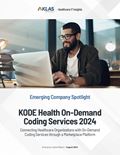
Amid pressing coding needs, fluctuating volumes, and turbulent staffing challenges, healthcare organizations often look to services firms to manage medical coding. KODE Health’s on-demand coding services provide a flexible marketplace platform that connects healthcare organizations with qualified contract coders on demand. This report explores the satisfaction of a small sample of KODE Health clients.

A market with consistently high energy, 340B programs remain top of mind for eligible healthcare organizations as they try to drive cost savings for both their organization and their patients. With increasing drug manufacturer restrictions and the possibility of additional legislation down the road, organizations continue to look to their 340B management vendors for tools and expertise to help navigate this space. This report examines customer satisfaction with 340B management vendors by looking at factors such as use by different customer types, customer ability to find savings and get their money’s worth, strength of vendor support, and vendor guidance in managing evolving challenges.
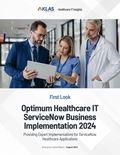
To ensure the fastest and strongest outcomes from a new software investment, healthcare organizations often turn to professional implementation services firms, such as Optimum Healthcare IT. Optimum works to provide expert, healthcare-specific digital transformation and consulting services, including the implementation of ServiceNow applications. This report examines recent client experiences with Optimum’s ServiceNow business implementation services.

Throughout the year, KLAS publishes a series of single-solution reports that inform the market about new solutions, or solutions newly measured by KLAS, that may help improve the delivery of healthcare. These reports—called Emerging Insights reports—include: .
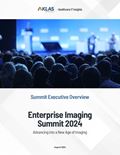
In April 2024, KLAS hosted our fifth Enterprise Imaging Summit in Park City, Utah. During the two-day event, enterprise imaging (EI) thought leaders from provider organizations and healthcare IT vendors came together to discuss how to push the frontiers of EI and take advantage of advancing technologies amid industry-wide budget constraints and staff shortages. This report summarizes the key learnings from the discussions and keynote addresses at the summit, presenting best practices on (1) expanding EI strategies, (2) adopting AI for imaging, (3) moving to the cloud, for imaging, and (4) improving provider-vendor relationships to enable faster industry progress.
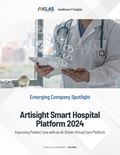
For healthcare organizations, patient care is becoming more challenging due to staffing shortages and increasing clinician burnout. One way for organizations to maximize their limited clinical resources is to leverage virtual care tools. Artisight seeks to provide a complete tool set with their Smart Hospital Platform, which uses AI-driven insights to help nurses and physicians enhance their efficiency. This report examines the experience of Smart Hospital Platform customers.

Historically, healthcare organizations have primarily used real-time location system (RTLS) solutions to track assets and equipment. However, with the recent advancements and improved usability of RTLS technology, many organizations are moving beyond established use cases (e.g., asset tracking) to focus on emerging use cases (e.g., hand hygiene tracking) as well. When organizations have several use cases for their RTLS technology, they see a broader set of outcomes and tend to be more satisfied with their solution. This report examines customer experiences with their RTLS vendors and shares case studies from individual organizations leveraging their RTLS technology to achieve critical outcomes.
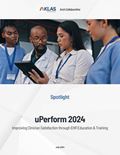
The KLAS Arch Collaborative has found that proper training is crucial to clinicians having a positive EHR experience, which in turn can be a key factor in their satisfaction and levels of burnout. uPerform partners with health systems to streamline and scale EHR training and supports organizations through implementations, upgrades, and other changes to the EHR. This report explores customer ratings for uPerform across a variety of performance metrics and highlights three customer case studies that provide examples of how uPerform impacts clinician satisfaction with the EHR.

Over the years, healthcare organizations working with go-live support firms have generally reported high satisfaction—while that trend continues, clients are starting to expect more customized execution rather than a traditional standard consulting approach from their services firm. To help healthcare organizations find the right go-live partner in a historically homogenous market, this report provides on client experience and satisfaction and offers insights into the type and size of validated go-live engagements. Additionally, the Firm Insights section shares firm-provided best practices on EHR go-lives.
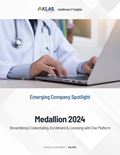
It can be challenging for healthcare organizations to oversee credentialing, enrollment, and licensing without the proper tools. Medallion’s solution aims to help customers have simpler, faster, and higher-quality credentialing, enrollment, and licensing processes by combining all related tasks in one platform. This report shares the experience of Medallion customers.

The EHR holds a plethora of information that helps healthcare organizations provide better, more-informed care, but it takes time for users to find the most relevant data for current patients. As a result, many organizations are turning to clinician digital workflow solutions, which automate and streamline clinical workflows within the EHR—primarily chart reviews, documentation, and care team coordination. Recent advancements in AI and other technology have resulted in further traction of these solutions, as organizations believe the advancements have the potential to enhance clinicians’ EHR experience. This report—KLAS’ first to focus on clinician digital workflow solutions—examines vendor performance, the solution capabilities being used, and the impact of advanced technologies on interviewed customers.

With the aim of facilitating collaboration between payer organizations, healthcare delivery organizations, and technology partners, KLAS hosted the fourth annual K2 Collaborative Payer/Provider Summit in May 2024. Representing 96 different payer, provider, and vendor organizations, the 136 individuals in attendance demonstrated their willingness to connect and engage, improve understanding, and partner to bring to light new ways of solving problems. While such collaboration can be difficult to achieve, KLAS has seen these partnerships yield outcomes that are meaningful to all parties.
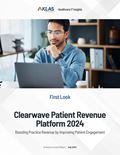
Clearwave provides a patient revenue platform that aims to create a simpler way for patients to engage with healthcare organizations. Patients want an improved customer experience through self-serve kiosks, digital registration, and online scheduling, while specialty practices and health systems want increased revenue with decreased administrative burden. Clearwave works to meet the needs of both. This report offers a first look at customer experiences with Clearwave Patient Revenue Platform.

Over the last five years, there has been consistent energy around EPR investment and digital transformation in the UK and Ireland—on average, at least six healthcare organisations have made an EPR purchase decision each year. Going forward, activity will likely increase amid integrated care system (ICS) alignment, as over 50 trusts will look to upgrade or deploy their first EPR over the next few years. While going through the complex decision-making process, organisations frequently look for a partner that can provide not only core documentation and ordering functionalities but also additional clinical, administrative and ancillary modules to support their digital transformation. This report includes (1) an overview of the market share and customer satisfaction with EPR suppliers in the UK and Ireland and (2) a look at suppliers’ broader portfolios, diving into the performance and adoption of modules outside of core functionality.

Healthcare organizations across the world are continuing to prioritize EHR initiatives; although the total number of EHR purchase decisions finalized in 2023 was slightly below the average of recent years, the number of hospitals impacted by the contracts is at a five-year high thanks to several large regional decisions being finalized. In 2023, KLAS validated 186 EHR purchase decisions impacting 734 hospitals and over 128,000 beds. KLAS validated 28 different EHR vendors selected in 35 different countries and territories. Based on the validated EHR decisions, Europe and Oceania were the most active markets, followed by Latin America and Canada.
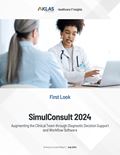
Misdiagnoses have historically been a significant challenge in healthcare. Diagnostic odysseys and inaccuracy negatively impact both patient outcomes and provider organizations. The SimulConsult software was created to address this and is patterned after the way experienced clinicians think about diagnosis. Through diagnostic decision support, a mix of AI and augmented intelligence, and workflow software, SimulConsult aims to augment the clinical team, save time, and improve diagnostic accuracy, thus empowering providers to improve patient care.

As consumerism has increased in the healthcare industry, organizations have used digital rounding solutions to measure and improve patients’ satisfaction during their stays. Although adoption of these solutions slowed during the COVID-19 pandemic, digital rounding is once again gaining momentum as healthcare organizations seek to gain visibility into patient needs and increase the efficiency of nursing workflows. This report examines how well digital rounding vendors provide strong partnership, technology, and training to support outcomes and efficiencies for healthcare customers.

The patient experience improvement market has evolved over the years. Provider organizations initially used standardized, retrospective benchmarking data to improve the patient experience before shifting to customizable tools that collect feedback in real time and aid with service recovery (see KLAS’

Most healthcare organizations have made immense progress in their overall digitization process, and many are now switching their focus to the optimization of their technology and tech-related processes. High-cost areas are especially being scrutinized to see where costs can be reduced and efficiency improved. One historically high-cost area is the pharmacy, and organizations are starting to use purchasing optimization analytics solutions to identify savings in their pharmacy purchasing. This report—KLAS’ first in this space—examines why interviewed customers are generally satisfied with their vendor, to what extent vendors are driving outcomes, and what functionality is being utilized.
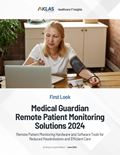
Remote patient monitoring (RPM) solutions seek to address health concerns, treat conditions remotely, and monitor key patient health metrics using a combination of hardware and software tools. Medical Guardian is among the vendors providing RPM tools to reduce readmission rates and bridge the gap between providers and patients. This report examines customer feedback regarding LifeStream by Medical Guardian (formerly Clear Arch Health).
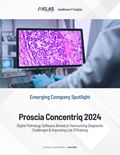
Labs worldwide feel the impact of rising diagnostic burden and a shortage of pathologists. Slow processes and limited access to analog pathology data contribute to this burden. To help ease this burden, Proscia offers Concentriq, an enterprise pathology platform that allows organizations to digitize their labs and adopt AI applications that help deliver more efficient results. This report examines customer experiences with Proscia Concentriq. (Responding organizations are located in the Netherlands, Spain, and the US.)
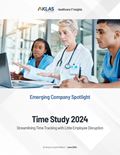
Healthcare organizations are required to complete time studies for cost reporting, CMS reimbursements, and other compliance needs. For many, time tracking is a manual process involving spreadsheets and paper, and it can be difficult to achieve the necessary physician participation. Time Study has created a solution to streamline the time-tracking process and increase participation by sending alerts to providers. This report looks at customer experiences with the Time Study platform.
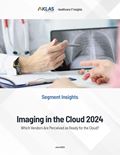
The healthcare imaging market in the US is moving to the cloud—nearly two-thirds of the 228 healthcare organizations surveyed about their cloud road map either are using the cloud for diagnostic image viewing and/or storage or are likely to start using the cloud within the next three years. As organizations transition, it is critical for them to choose a vendor that provides not only a reliable cloud solution but also strategic guidance to ensure a successful migration. Intended to help organizations considering the cloud, this report shares customer perceptions of their vendors’ readiness for the cloud, along with an overview of the state of cloud adoption in the imaging market.

Historically, behavioral health has been treated separately from primary care in the US, though many behavioral health patients have comorbidities that also require primary care. To care for patients more holistically, some behavioral health organizations have recently started to move to an integrated care model, which combines behavioral health and primary care. However, the functionality and reporting needed for behavioral health differs greatly from that of primary care, and organizations are looking for technology to help in their efforts to provide integrated care. This report examines behavioral health organizations’ plans for integrated care, which technologies are viewed as most influential, and vendors’ EHR offerings and performance in this area.
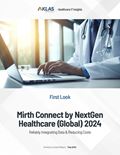
Integration engines help provider organizations manage multiple data sources, including patient and pharmacy information and secure messaging data. Mirth Connect by NextGen Healthcare is an open-source integration engine that serves the global market. This report examines the experiences and key functionality adoption of many existing customers outside the US who are currently using the commercial version of the platform.
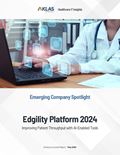
Healthcare organizations’ ability to extract and organize data surrounding capacity management and patient movement is vital to patient care. Through AI-enabled tools and workflows, organizations are beginning to address challenges related to capacity management. The Edgility platform helps organizations gain insights with its unique AI approach. This report takes a look at the satisfaction and outcomes of customers using the Edgility platform.
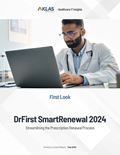
Delays and mistakes while transcribing prescription renewals can have devastating consequences for patients and health systems. Organizations are beginning to use automated and AI-enabled tools during the renewal process to safeguard against these risks. SmartRenewal—part of the Fuzion by DrFirst medication management platform—integrates into EHRs and automatically captures and inputs prescription renewal information. This report takes a first look at customer satisfaction and outcomes with the DrFirst solution.
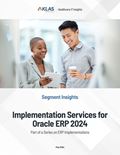
As more provider organizations choose to move forward with cloud-based ERP solutions, it is critical for them to implement the solution without negatively affecting day-to-day business. To avoid challenges during implementation, organizations are partnering with firms that offer implementation leadership and business transformation services. This report examines the client experience of three firms who provide implementation services for Oracle’s ERP suite and what these firms are doing to drive success.
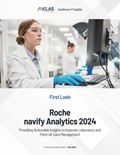
Managing data sources and effectively using data are paramount concerns for medical laboratories and point-of-care (POC) services. Ineffective data management increases costs and lowers overall efficiency. Roche’s navify Analytics suite, which consists of unique applications with insights tailored for the different testing disciplines (core, pathology, molecular, and POC), consolidates data and provides both structured and customizable reporting to understand and address complex questions in laboratory and POC management. This report takes a first look at customer experiences with navify Analytics.
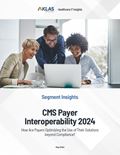
With the initial goal of meeting CMS requirements (e.g., CMS-9115-F), payer organizations have invested heavily in interoperability solutions to transform data into the FHIR format and provide APIs for member portals and other data exchanges. Still, industry-wide usage among patients for these types of offerings is low, with very few enrolled members asking payers for their medical information. As a result, payers need to determine how to utilize the solutions in a way that maximizes their value, especially as some payers report higher price tags from vendors for the technology to support more use cases. To help payer organizations navigate this field, this report examines the performance of CMS interoperability vendors as well as what current and future use cases are a priority for payers.

Acute care EHR purchasing remained high throughout 2023. While market energy in 2022 was mostly driven by small organizations, the majority of 2023 purchases were the result of large multispecialty and specialty organizations making go-forward decisions. Of the 319 hospitals impacted by go-forward decisions (including migrations and specialty hospital wins), 79% were part of health systems while the remainder were standalone hospitals. Key decision drivers were acquisition activity and the need to streamline IT departments and improve clinical usability. This report examines these and other trends in EHR purchases that occurred in the US from January–December 2023.
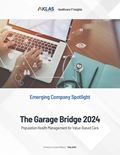
Healthcare organizations use many different data sources for care information and coordination, and data management is critical in order for organizations to deliver effectively on value-based care contracts. The Garage aims to help organizations on this front with Bridge, a value-based care platform. This report examines the Bridge customer experience.

Many healthcare organizations are working to proactively address socioeconomic barriers to patients receiving needed healthcare—prompting vendors to roll out technology solutions that can collect and manage social determinants of health (SDOH) data. This report uses KLAS’ Framework for a Successful SDOH Program (introduced in Later in 2024, KLAS intends to publish a report that examines customers’ experiences with their SDOH solutions.
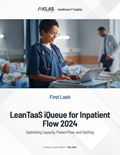
Optimizing staffed bed capacity is paramount for provider organizations balancing financial concerns with patient care. Capacity optimization solutions aim to simplify these efforts by combining AI, workflow automation, and transformation services to drive action to decision-makers. This report offers a first look at LeanTaaS iQueue for Inpatient Flow from the perspective of current users.
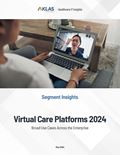
As virtual care has significantly expanded since COVID-19, provider organizations have generally solidified their . This report focuses on virtual care platforms, which often allow for outpatient/inpatient vendor consolidation. While many organizations are still using multiple solutions to deliver virtual care, some are moving toward total consolidation and need an enterprise solution that provides the necessary use cases for their organization. This report examines the virtual care platform market by looking at breadth of use cases as well as vendor performance, especially in terms of innovation and delivering on promises.

Strategic partnerships between payer and provider organizations and their HIT vendors are becoming a cornerstone of transformative improvements to healthcare processes and outcomes. KLAS’ annual K2 Collaborative Points of Light awards celebrate such partnerships’ successes—or “points of light”—in reducing cost and inefficiencies and improving the patient, provider, and payer experience.
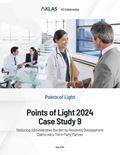
The payer and provider organizations in this collaboration were struggling with a high volume of correspondence regarding potential overpayment claims, creating an administrative and time burden for both organizations. To resolve this issue, they partnered with TREND Health Partners to review potential overpayments and facilitate communication between the organizations. Outcomes include a reduced administrative burden for the organizations and improved financial performance for the health plan.
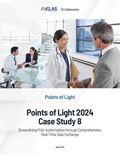
The prior authorization process often causes friction between payer and provider organizations due to back-and-forth requests for data. In this case study, enGen worked with the collaborating payer and provider organizations to create a solution for utilization, case, and disease management, thus facilitating better data transparency. Use of this solution led to better turnaround times for prior authorizations and reduced manual tasks.

Accurate data is needed for HEDIS reporting, but claims data does not always provide payer and provider organizations with a complete picture of patient/member compliance with Medicaid measures. To mitigate this challenge, the stakeholders in this collaboration created a continuous HEDIS review workflow to triage cases and close care gaps. Outcomes include increased efficiency in identifying care gaps, fewer cases that need to be manually reviewed, and better patient/member care.

Authorizing managed care referrals can be a labor-intensive, time-consuming process that burdens provider organizations, health plans, and patients. In this collaboration, the stakeholders worked to combine API technology with robotic process automation to streamline the referral process and provide transparency into the status of referrals. Outcomes include reduced administrative burdens and increased access to care for patients.
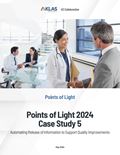
Payer organizations need timely access to accurate clinical data; however, the release of information process can often be cumbersome for provider organizations, causing them to be overwhelmed by payer requests. The stakeholders in this collaboration implemented technology to automate the chart-retrieval process, leading to improved data access for the payer organization and a reduced administrative burden for the provider organizations.
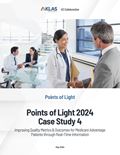
Lack of timely data can prevent provider organizations from facilitating appropriate care coordination after patients are discharged from a hospital visit. The payer and provider organizations in this collaboration worked together with Bamboo Health to increase visibility into Medicare Advantage (MA) patient data and improve CMS Star Ratings. The outcomes include improved performance with CMS measures, timelier follow-up, and better care coordination.
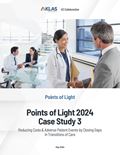
During transitions of care, payer and provider organizations have to manage several moving parts; if clinical data is lost or patient care coordination goes awry, it can negatively impact patient outcomes and the cost of care. In this collaboration, the stakeholders worked together to create a solution that identifies when care transitions are occurring and provides care teams with appropriate clinical information, allowing them to close care gaps.
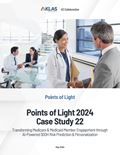
Negative social and environmental factors, such as unsafe housing or food insecurity, can worsen patient health and lead to them overusing the emergency department (ED). In this collaboration, Sentara Health engaged N1 Health to identify social determinants of health (SDOH) for Medicare and Medicaid members and match these individuals with benefits to facilitate better care and promote re-enrollment. The partners also used AI to determine which patients had high risk for housing insecurity so that they could provide housing assistance via a grant-funded program. These efforts lead to reduced ED usage, increased use of preventive services, and higher re-enrollment in Medicare/Medicaid.
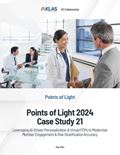
Due to changes in the health plan market, Cigna Healthcare’s membership unexpectedly increased from 350,000 members to 1 million members. In order to ensure appropriate care and reimbursement, the payer organization had to quickly assess, engage, and offer care options to these new members. Cigna worked with MDLIVE and N1 Health to proactively reach out to members with a help-first approach and schedule annual wellness visits for them, ensuring that the members received the right care and that the payer organization was properly reimbursed.
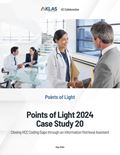
Hierarchical Condition Category (HCC) coding plays an integral role in assessing patients’ risk scores and contributes to quality patient care and appropriate reimbursements. However, provider organizations don’t always have the needed information or training to be able to accurately complete HCC coding and close coding gaps. The stakeholders in this collaboration worked together to seamlessly transfer payer information into clinician workflows, leading to improved data transparency and, ultimately, more accurate coding.
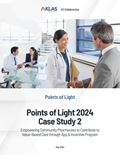
In New York, 80% of Medicare Advantage (MA) members visit their community pharmacy 5–10 times a year, which is more than they visit their primary care physician. Delivering patient insights directly to pharmacy systems can better facilitate positive interactions with patients/members, reduce friction between payer and provider organizations, improve refill outreach, and increase patients’ understanding of their benefits. The vendor and payer organization in this collaboration worked together with local pharmacies to create a solution that connected disparate data and identified care gaps. This solution led to better patient outcomes, greater financial viability for the pharmacies, and improved CAHPS scores.
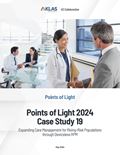
Provider and payer organizations typically have the tools and data needed to identify and provide care management to high-risk patient populations. However, patients with rising risk are harder to identify and provide care to. To improve care management for this group, the stakeholders in this collaboration implemented Lightbeam Health Solutions’ deviceless remote patient monitoring solution. This solution has led to improved health outcomes for high- and rising-risk patients as well as improved patient engagement.
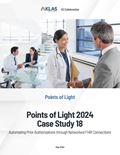
Payer and provider organizations need to be able to effectively and efficiently share data throughout the prior authorization approval process, but the complexities of data sharing often create an administrative burden and high costs for organizations. In this collaboration, Healthcare Organization 18 and Regence partnered with eHealth Exchange to facilitate faster, easier data sharing through FHIR technology. The stakeholders aim to process prior authorizations more quickly via a single data exchange workflow that connects the provider organization with all payer organizations.
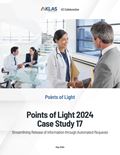
The manual efforts required for release of information requests created a large administrative burden for the stakeholders in this collaboration. In an effort to reduce this burden, the stakeholders worked with Epic to bundle and automate requests for clinical data. This collaboration led to faster turnaround times for release of information, a reduction in administrative work, and increased provider satisfaction.

The manual nature of prior authorizations creates an administrative burden for provider and payer organizations and delays patient access to care. The stakeholders in this collaboration worked to automate the prior authorization process by using Availity to connect the payer and provider solutions, allowing data to be exchanged more seamlessly. This project led to a faster turnaround time for prior authorization approvals, a reduced administrative burden, and improved access to care for patients.

For the provider organization in this collaboration, the process of gaining prior authorization for inpatient stays was labor and time intensive. Additionally, the payer organization often had to deal with incomplete submissions. To address these challenges, the stakeholders worked with Rhyme to streamline the prior authorization process through automatic data sharing. Targeted outcomes include faster decision rates and turnaround times for prior authorizations and a reduced administrative burden for the payer and provider organizations.
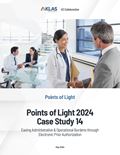
The complex nature of prior authorizations often delays needed patient care and creates a large administration burden for payer and provider organizations. To mitigate these issues, the stakeholders in this collaboration worked to create an electronic prior authorization process via Epic Payer Platform to automate prior authorization requests, reducing the burden on payer and provider staff and improving patient access to care.
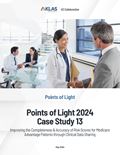
When Medicare Advantage patients are seen by provider organizations other than their primary care physician (PCP), they may receive diagnoses that their PCP is unaware of. This lack of data transparency can negatively affect patient care, risk adjustment scores, and CMS reimbursements. The payer and provider organizations in this collaboration worked together with Epic to improve patient care and risk adjustment scores through data transparency at the point of care.
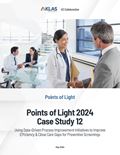
Preventive screenings for breast cancer, colorectal cancer, and diabetic retinopathy are vital to improving patient health outcomes and reducing costs for payer and provider organizations. Many patients of the provider organization in this study were not receiving or following through with referrals for these necessary preventive screenings, so the provider and payer organizations collaborated with CareAllies to create a better referral workflow. Outcomes include an increased number of referrals, improved patient engagement, and improved Star Ratings.
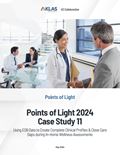
Socioeconomic factors, from food insecurity to lacking health literacy, can prevent health plan members from being involved in their health and lower the quality of their health outcomes. Additionally, payer and provider organizations are unable to fully care for and support members when they are unaware of the factors impacting members’ wellness. The payer and provider organizations in this collaboration worked together to create data transparency for clinicians, thus improving member engagement and health outcomes as well as compliance with HEDIS measures.
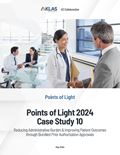
A lengthy prior authorization process was delaying needed care for OrthoTennessee patients who had received knee surgery. To resolve this issue, they partnered with Humana and Cohere to bundle prior authorizations together into a single transaction. This reduced the administrative burden on the provider and payer organizations and increased the timeliness of patient care.
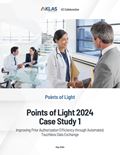
The prior authorization process for the provider and payer organizations in this case study was inefficient and manual due to a lack of integration between the organizations’ data, delaying patient access to advanced imaging services. The collaborators worked with their vendor partner, Rhyme, to connect the provider and payer workflows and share prior authorization data in real time. This automated process has minimized the need for manual touches and decreased the turnaround time for prior authorization approval, enabling patients to more quickly receive needed services.
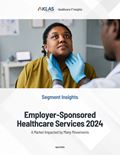
Employers (private and public) and unions are increasingly experiencing challenges with highly variable healthcare costs and their employees’ ability to access timely, quality care. As a result, many are turning to firms that help provide a wide range of healthcare services directly to employees, either on-site or near-site. Additionally, energy is high in this market due to several recent mergers and acquisitions, which have the potential to drastically shift market share and client experience over time. To help employers and unions navigate this space, this report examines the overall employer-sponsored healthcare services market, including client satisfaction, how acquisitions are changing the market, how firms help clients realize value, and which healthcare services are being offered.
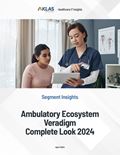
When making a core HIT purchasing decision, ambulatory healthcare organizations must take into account how prospective partners deliver across a variety of key technology areas beyond core EHR and PM solutions. This Veradigm “complete look” provides a high-level analysis of the key IT components that make up Veradigm’s comprehensive suite. (Other reports in the series do the same for .)
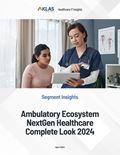
When making a core HIT purchasing decision, ambulatory healthcare organizations must take into account how prospective partners deliver across a variety of key technology areas beyond core EHR and PM solutions. This NextGen Healthcare “complete look” provides a high-level analysis of the key IT components that make up NextGen Healthcare’s comprehensive suite. (Other reports in the series do the same for .)
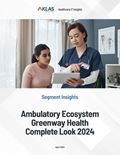
When making a core HIT purchasing decision, ambulatory healthcare organizations must take into account how prospective partners deliver across a variety of key technology areas beyond core EHR and PM solutions. This Greenway Health “complete look” provides a high-level analysis of the key IT components that make up Greenway Health’s comprehensive suite. (Other reports in the series do the same for .)
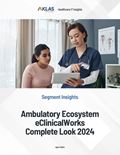
When making a core HIT purchasing decision, ambulatory healthcare organizations must take into account how prospective partners deliver across a variety of key technology areas beyond core EHR and PM solutions. This eClinicalWorks “complete look” provides a high-level analysis of the key IT components that make up eClinicalWorks’s comprehensive suite. (Other reports in the series do the same for .)
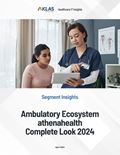
When making a core HIT purchasing decision, ambulatory healthcare organizations must take into account how prospective partners deliver across a variety of key technology areas beyond core EHR and PM solutions. This athenahealth “complete look” provides a high-level analysis of the key IT components that make up athenahealth’s comprehensive suite. (Other reports in the series do the same for .)
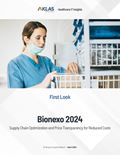
As healthcare organizations face rising operational costs, they are looking to enterprise resource planning solutions to optimize supply chains and minimize expenses. In the Brazilian market, Bionexo seeks to meet provider needs, be a source of transparency and reliable information, and facilitate customer purchases from suppliers. This report looks at the satisfaction and functionality adoption of Bionexo customers at several Brazilian healthcare organizations.

To personalize healthcare and prioritize patient preferences, provider organizations often use customer relationship management (CRM) tools, which can effectively organize and present the details of a patient population. Recently, the CRM market has shifted—vendors have entered the market, sensing the opportunity to address organizations’ growing interest in personalizing care and improving their management of patient data, and some of these newer entrants are now on par with seasoned players. This report examines customers’ experiences with three vendors to see how well they partner with customers and deliver strong technology.

The recent rise of generative AI in clinical documentation has led many healthcare organizations to look at ambient speech products to decrease non-clinical work and burnout for physicians. Suki leverages machine learning and large language models to power their solution’s voice-enabled, fully automated generative AI. The Suki Assistant solution generates clinical notes in real time and provides capabilities such as audibility features and code suggestions. This report examines the experience and satisfaction of Suki customers, including healthcare leaders and physician users.
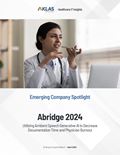
Ambient speech AI technology is top of mind for many healthcare organizations as they seek ways to improve physician efficiencies and well-being. Using machine learning and large language models, Abridge’s voice-enabled, fully automated generative AI solution generates clinical and patient notes in real time. The Abridge product aims to increase trust and impact through code suggestions, multilingual capabilities, and mapping of AI content to audio/transcript evidence. This report explores the experience and satisfaction of Abridge customers, including healthcare leaders and physician users.
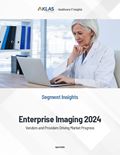
Healthcare organizations are very focused on enterprise imaging (EI) advancement. Two-thirds of the organizations interviewed by KLAS about future EI plans are likely to expand their VNA image storage or extend their universal viewer (UV) to additional service lines in the next two years. Organizations are also increasingly taking advantage of promising new technology like artificial intelligence (AI) and the cloud. Meanwhile, both vendors and healthcare organizations face budget and staffing shortages and rapidly changing market needs. This report (1) examines how vendors stack up in meeting clients’ ever-growing EI needs and (2) shares a broader analysis of progress in the EI market.
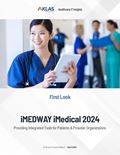
China-based iMEDWAY offers a solution called iMedical—an integrated, customizable platform intended to help provider organizations store medical data and coordinate patient care. This report—KLAS’ first to offer insights on iMEDWAY—looks at the satisfaction and key outcomes of customers using iMedical.

Two critical components of comprehensive patient care—healthcare education and patient engagement—empower patients to make informed health decisions and better prepare for treatment. Effectively providing education and measuring patients’ usage is essential for healthcare organizations, especially in improving quality, safety, and the patient experience. Mytonomy Cloud for Healthcare is a patient education and engagement platform with original and tailored clinical content that aims to improve patients’ education experience. This report examines feedback from several Mytonomy customers.
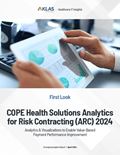
With the rapid rise in value-based care contracts and emphasis on patient population health, healthcare provider organizations are looking for insights into specific populations and metrics to manage outcomes and coordinate care. COPE Health Solutions seeks to meet this need by providing analytics and visualizations of population health data through the Analytics for Risk Contracting (ARC) solution. This report takes a first look at customer satisfaction and key functionality adoption among ARC customers.
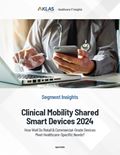
Healthcare organizations are continually expanding their use of smart devices, but their unique needs for durability, healthcare-centric workflows, and low costs can present challenges for both users and the organizations purchasing the devices. While many healthcare organizations opt for BYOD programs in specific departments, several are adopting shared smart device programs. Based on interviews from 80 healthcare organizations using such programs,
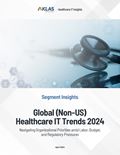
As healthcare organizations face tight labor markets, constrained budgets, staff burnout, and government regulations, their priorities and investment plans for healthcare IT are shifting. To understand these issues and resulting priorities, KLAS interviewed 219 healthcare organizations in 42 countries/territories about their priorities for IT investments, plans for leveraging the cloud, and consideration of consulting firms for future engagements. This report also examines how priorities have changed since KLAS’ to learn more about US organizations’ investment priorities.)
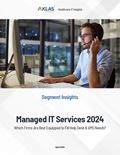
Due to staffing shortages and rising costs, healthcare organizations are increasingly looking to outsourced managed services firms to relieve the burden of hiring and maintaining IT staff—enabling organizations to reallocate and better utilize their in-house resources. This report—the first in a series to focus on managed IT services—examines which firms consistently deliver quality application management services (AMS) and help desk services to healthcare provider and payer organizations; it also shares insights into the managed IT services market, including the pain points driving organizations to adopt and expand use of IT outsourcing. KLAS intends to publish reports on the other two managed IT services verticals later in 2024.
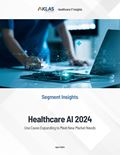
The use of artificial intelligence (AI) in healthcare is rapidly evolving. More healthcare organizations are adopting data science platforms and other AI solutions to help alleviate the challenges of today’s environment, with a particular focus on increasing operational efficiency. Based on the feedback of both payer and provider organizations, this report examines the clinical, financial, and operational use cases for which AI is being adopted as well as the outcomes being achieved.

Healthcare organizations continue to face challenges with getting reimbursements, due in part to large volumes of complex medical claim denials issued by payer organizations. To access expertise in managing the appeals process, many healthcare organizations are engaging denials management services firms, who utilize multidisciplinary teams (e.g., legal, clinical, coding) to review accounts and submit appeals. This report—KLAS’ first on denials management services—examines which firms consistently deliver strong execution, expected overturn rates, expertise, and partnership in denials prevention.
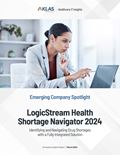
Drug shortages present problems for healthcare organizations as they endeavor to provide the best care possible. Unless organizations have proper processes in place, significant drug shortages can have cascading negative impacts across the care continuum. LogicStream Health’s Shortage Navigator aims to deliver all the tools providers need to be prepared for medication shortages. This report examines the experiences of several Shortage Navigator customers.
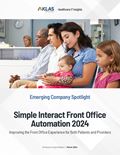
Many patients’ healthcare experiences begin with an interaction in the front office. Therefore, a streamlined front office experience is beneficial to both patients and healthcare staff. Simple Interact aims to provide the tools provider organizations need through the Front Office Automation platform, which works to improve workflows, reduce staff needs, and increase patient acquisition. This report examines the experiences of several Simple Interact customers.
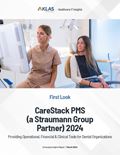
Straumann Group has partnered with CareStack to launch CareStack PMS, a consolidated dental organization management solution that provides the operational, financial, and clinical tools a dental practice needs to succeed. This report presents the feedback of several customers and examines their satisfaction and adoption of key solution functionality.
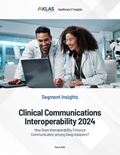
Provider organizations are seeking communication tools that enable interoperability with a diverse set of solutions, ultimately ensuring the right clinician gets the right information at the right time. This report looks at the interoperability capabilities of communication solutions through the lens of deeply adopting provider organizations and whether they are able to break down silos between different departments and organizations through enhanced integration. These experiences are not typical of all customers and represent the hard work of vendors and providers deeply engaged in interoperability.
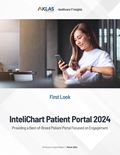
Although most EHR vendors offer a patient portal, the functionality does not always meet customer needs. InteliChart offers an alternative option through their patient portal, aiming to provide an all-in-one patient engagement platform that fully integrates with any EHR and includes automated tools such as self-scheduling and integrated forms. This report examines the experiences of customers using the InteliChart Patient Portal.

As health plans continually look to reduce costs and improve outcomes for their members, they are utilizing data analytics platforms to bring better visibility to their decisions. This vendor guide is intended to provide a simple starting point for health plans investigating data analytics platforms. The guide focuses on vendors that (1) provide a platform approach to their data analytics solutions, (2) operate across multiple US regions, and (3) provide a variety of use cases. All such vendors known to KLAS as of January 2024 are included in this guide.
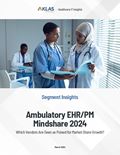
In the dynamic market of ambulatory care, practices are continually evaluating their options for EHR and PM solutions—which vendors are top of mind fluctuates as regulations change, technology advances, and vendor reputations evolve. For this report, KLAS spoke to over 200 ambulatory practices to examine which ambulatory EHR/PM vendors have the most mindshare for future potential decisions and which vendors are being considered or chosen in actual decisions.
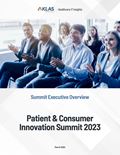
In November 2023, KLAS hosted the third Patient & Consumer Innovation (PCI) Summit in Salt Lake City, Utah. Thought leaders from healthcare delivery organizations and HIT companies were in attendance, along with—most importantly—patient representatives. All attendees came together to discuss the transformation necessary to more fully involve patients in healthcare and measure what matters most to healthcare organizations. Drawing on responses from both a pre-summit survey and small-group discussions at the summit, this paper highlights KLAS’ updated patient engagement framework and shares best practices for patient communication and patient self-scheduling.
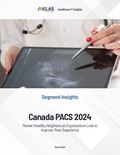
Many healthcare organizations in Canada have been using their PACS for years. Since the outbreak of the COVID-19 pandemic, KLAS has seen potential-replacement rates for Canada PACS solutions increase to a historic high, where more than one-third of interviewed organizations are actively looking to replace their PACS. This report examines vendors’ performance and the customer experience in Canada to help organizations understand the strengths and weaknesses of available options in the market.
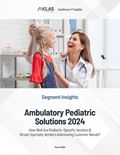
Amid changing regulations from entities like the American Academy of Pediatrics and HIPAA, pediatric clinics’ functionality needs are increasing and becoming more specific. Most ambulatory pediatric practices are small organizations with limited budgets, and they have to prioritize functionalities that are most important and forgo others to stay within budget. In addition to established pediatric-specific vendors, broad-specialty vendors are addressing this challenge by developing pediatric-specific EHRs or adapting existing platforms to cater to customer needs. Following , this report examines how well pediatric-specific and broad-specialty vendors meet the unique customer needs of this niche market.

Both patients and provider organizations want solutions that simplify the often confusing, inefficient process of writing, filling, and paying for prescribed medications. Surescripts’ Real-Time Prescription Benefit solution streamlines the prescription process by connecting prescribers with relevant information on patient insurance coverage, medication costs, and alternative medications. This report provides a first look at provider customers’ experiences, outcomes, and satisfaction with this solution.
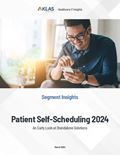
As the digital landscape grows in healthcare and other industries, patients are expecting more seamless and convenient access to healthcare and therefore report that self-scheduling is one of their by offering patient self-scheduling functionality to both increase patient convenience and reduce staff burden. This report focuses on five standalone patient self-scheduling solutions to understand their ease of use, why they were chosen over other types of solutions (e.g., EHR functionality), and whether they are worth the money. Additional insights about the broader patient self-scheduling market are also included.

For revenue cycle leaders, it is critical to stay on top of trends in payer interactions and identify opportunities to address billing and collection inefficiencies. All healthcare organizations use RCM analytics solutions—their EHR offering, a third-party solution, or a combination of both—to comprehensively understand their RCM practices and glean actionable insights that can optimize revenue and inform decisions. Drawing from the experience of organizations using third-party tools that ingest data from multiple disparate sources, this report provides insights into the performance of three different solutions.
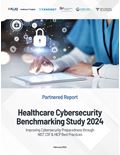
With cyberattacks on the rise, having a strong cybersecurity strategy is a must for healthcare organizations, especially as they face post-pandemic resource constraints and staffing shortages. Many are protecting their data by adopting and implementing cybersecurity frameworks and best practices, such as the on the status of healthcare cybersecurity preparedness. It also examines the effect of governance and resource investment on cybersecurity preparedness and insurance premiums. Data for this report comes from 58 respondents (54 payer or provider organizations and 4 healthcare vendors) who were interviewed September–December 2023.
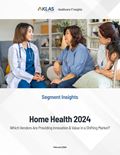
Over the last few years, the home health market has undergone extensive changes following mergers and acquisitions, fluctuating regulatory requirements, and shifts in the workforce. As a result, user frustration around home health solutions has increased, and home health agencies have sought greater collaboration, development, and automation from their vendors, with some customers even reconsidering their current investments. Through a look at current market share, recent purchase decisions, and customer satisfaction, this report examines which home health vendors are best meeting provider needs, developing functionality, and driving value for customers.
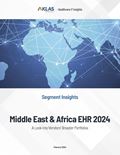
Over the last five years, the Middle East and Africa healthcare IT markets have expanded and evolved. The Middle East has seen consistent energy around EHR investment and digital transformation, with 10–15 purchase decisions being made annually. Energy in Africa has fluctuated year over year, impacted by some very large regional purchase decisions. When selecting an EHR vendor partner for the digital journey, organizations almost always consider other clinical, administrative, and financial functionalities in addition to the core EHR capabilities the vendor provides. This report both provides an update on EHR vendor performance and market share and offers KLAS’ first holistic look at EHR vendors’ broader portfolios in the Middle East and Africa, specifically highlighting the adoption and performance of ancillary EHR modules.
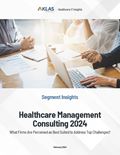
Across the healthcare industry, executives are grappling with myriad challenges and high-stakes decisions that will affect the trajectory of their organizations. Many are turning to management consulting firms for help enhancing operations and improving performance long term. KLAS interviewed 163 healthcare leaders from March 2023 to December 2023 to gather their perceptions on which challenges are most pressing, what consideration factors should be used to evaluate firms, and which firms are seen as best suited to help. KLAS intends to use these findings to measure the service offerings and firms that have the most mindshare in healthcare.

Staff scheduling in healthcare has a unique set of challenges that can be exacerbated by provider volume and manual processes for clinical workflow management. These challenges can lead to problematic patient care and poor provider and staff experiences. The TeamBuilder solution, built specifically for ambulatory facilities, is intended to alleviate organizational pain points around staff scheduling by assessing the needs of day-to-day operations and offering predictive staff scheduling. It aims to increase operational efficiency by taking on the burden of creating and managing schedules. This case study examines feedback from three respondents at one organization using TeamBuilder.
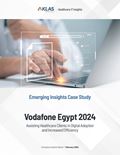
Especially outside the US, many organizations still rely on paper records for their processes, partly due to the substantial time and resources required to transition to digital processes. Vodafone Egypt offers services to help healthcare organizations adopt and maintain digital workflows, provided through the University Hospitals in Egypt. Vodafone Egypt aims to remove a large portion of the transition burden from providers by communicating with vendor partners and helping with EHR training and support. This case study examines early feedback from five respondents at one organization using Vodafone Egypt’s services.

Apprio was founded to help organizations solve key revenue cycle problems and has since evolved to provide automation solutions that help decrease costs and improve patient and employee satisfaction in the healthcare industry. The Apprio offering uses automation bots to reduce labor costs and improve organizational efficiency by automating repetitive workflows such as checking claims statuses and VA authorizations. This case study examines the experiences of several respondents from one organization using Apprio.
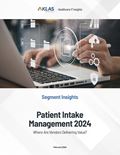
Consumerism and patient-centric tools are an increasing focus in healthcare—, and they continue to be important as healthcare organizations work toward increased efficiency and cost savings. While all measured vendors have room to improve functionality (e.g., two-way patient texting, patient satisfaction surveys), this report validates the breadth and depth of patient intake management solutions, identifies the outcomes these solutions drive, and examines the respective merits of third-party and EHR solutions.
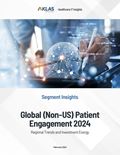
KLAS’ report found that investment in digital health is among healthcare organizations’ top three priorities across global regions. Patient engagement, alongside virtual visit technology and remote patient monitoring, is one of the key pillars of digital health. For this report, KLAS interviewed healthcare leaders from 155 organizations across 39 countries and territories around the world, and these leaders shared their current and future patient engagement priorities, their adoption of various patient engagement technologies, and what vendors they are using or considering.

The emergency department can be a chaotic and stressful environment that leaves patients feeling forgotten, but technological solutions can improve the patient experience without adding to the provider workload. Vital‘s ERAdvisor provides personalized tools and updates from check-in onward, thereby increasing patient engagement throughout the emergency department. This report examines the experiences of several ERAdvisor customers.
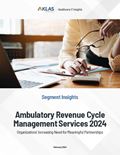
In the face of tighter staffing budgets and ever-changing requirements from payers, ambulatory provider organizations are increasingly relying on revenue cycle management (RCM) services firms—both EHR associated and EHR agnostic—to fill resource gaps and help develop processes that will maximize reimbursements. Further, organizations want a firm that will effectively own the claims process and be a true partner. Building on the report, this report examines both EHR-associated and EHR-agnostic services firms and shares how well they are meeting clients’ revenue cycle needs. Of note, many aspects of clients’ experiences are similar, whether they use an EHR-associated or an EHR-agnostic firm.

Provider organizations are facing intensifying revenue cycle complexity, payer relations, cost pressures, and staffing shortages, along with the resulting loss of resources and expertise. To find relief from some of these pressures, many are seeking outsourced extended business office services (EBOS) offered by firms that can execute revenue cycle management (RCM) work more economically and with greater efficiency than organizations can in-house. To share insights into a shifting market, this report provides (1) an update on client satisfaction and adoption and (2) a look into provider plans for outsourced revenue cycle services and satisfaction with offshore resources.

To combat a challenging financial market, ophthalmology practices are seeking EHR and practice management solutions that provide efficiencies, robust functionality, and strong ophthalmology-specific workflows. Many of these clinics also highly value their vendor relationships, where strong support and training enable the most effective use of the product and better outcomes for their practices. As a follow-up to , this report examines the dynamics of the ophthalmology EHR and practice management market by comparing some of the leading solutions in the market today.

CitiusTech offers packaged solutions to address a range of healthcare challenges. The firm’s data and analytics services help both payers and provider organizations modernize their data and analytics. This helps enhance clinical decision support and drive strategy and healthcare transformation while working to achieve cost effectiveness and the best outcomes for members, patients, and the community. This report examines the client experience with CitiusTech’s data and analytics services.
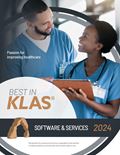
The Best in KLAS report recognizes software and services companies who excel in helping healthcare professionals improve patient care. All rankings are a direct result of the feedback of thousands of providers over the last year. A Best in KLAS award signifies to the healthcare IT industry the commitment and partnership that the top vendors should provide. Read the report to see the top-rated medical software and services for 2024.
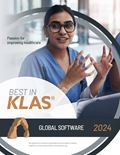
The Best in KLAS award is given to vendors to recognize their outstanding efforts to help healthcare professionals deliver better patient care. Global awards are given in the following software market segments: (1) acute care EHR, (2) digital pathology, (3) PACS, (4) shared care records/HIE, and (5) virtual conferencing platforms.

Managing medication shortages is a complex yet important part of a pharmacy leader’s work. Without proper tools in place, it can be prohibitively difficult to navigate shortage workflows and use data effectively. OrbitalRX’s solution aims to automate shortage management and give pharmacists confidence in their workflow. This report examines the experiences of several OrbitalRX customers.
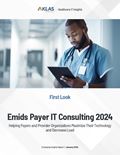
Payers and provider organizations are under increased pressure to maximize technology, decrease load, and deliver better care. Emids works to meet these current market needs through their payer IT consulting services, which include implementation services, managed services, and managed capacity to help drive needed outcomes like optimized implementations, decreased provider load, and improved overall process efficiency. This report offers a first look at client experiences with Emids’ payer IT consulting services.
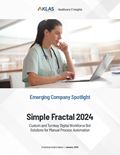
Simple Fractal aims to solve critical healthcare issues by automating complex end-to-end processes. Their custom and turnkey bot solutions help improve organizational efficiency, accuracy, and provider satisfaction while decreasing staff workloads and organization expenses. Simple Fractal’s digital workforce solutions span from initial business analysis, process discovery, and bot development to deployment and continuous operational support. This report offers a first look at customers’ experiences with Simple Fractal.
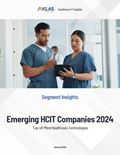
KLAS conducts thousands of interviews with provider and payer organizations each year to better understand their experience with their healthcare IT (HCIT) vendors. However, not all vendors are measured by KLAS today—some vendors have very small customer bases and others work in market segments outside KLAS' current focus. To gain insights into vendors we might not currently measure, KLAS asks interviewed organizations to share the most innovative or potentially disruptive HCIT vendors they have seen or heard about recently. Representing the feedback of 52 healthcare professionals and data from KLAS' website analytics, this report examines the emerging HCIT vendors and market segments that are top of mind for healthcare organizations and that are not currently measured by KLAS. In total, this report indexes 66 vendors across high-interest markets.
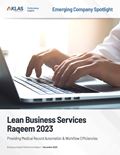
Healthcare organizations are under continual pressure from government-mandated laws to move away from manual workflows toward automation. This shift, coupled with software consolidation, aims to increase provider efficiency, and organizations are looking for products that meet their needs. Lean Business Services’ Raqeem platform is intended to help organizations improve efficiency and connectivity. This report shares customer experiences with the platform.
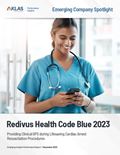
Speed and accuracy are of the utmost importance during code blue events, but the tense nature of these events can rattle all healthcare professionals, even experienced ones. Redivus Health’s solution for cardiac arrest resuscitation aims to remove as many variables from code blue events as possible and act as a digital guide for patient care that reliably manages code blue events and reduces medical errors. This report examines customer experiences with the Redivus Health Code Blue solution.

The US healthcare revenue cycle is inefficient and problematic. SparkChange addresses current key market needs by streamlining revenue cycle processes via database-level automations. These automations simplify complexities and minimize required tasks to ensure timely payments, allowing healthcare organizations to focus on what matters most—patient care. SparkChange aims to create sustainable performance improvements and provide lasting solutions, and this report offers a first look at customer experiences with the vendor’s solution.
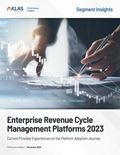
Across the industry, provider organizations are feeling pressure from staffing shortages, payer challenges, shrinking margins, and ever-changing regulations. To ease these challenges, vendors are working to create end-to-end platforms that bridge all revenue cycle offerings, and they claim these platforms will increase operational efficiencies and reduce costs. For this report, KLAS spoke to provider organizations who have deeply adopted a vendor’s enterprise revenue cycle management offerings to get a snapshot of current customer satisfaction and examine the benefits and challenges of platform adoption.

Amid current economic challenges, healthcare organizations are contracting with debt collection services firms (often multiple at a time) to ensure financial stability, leverage specialized expertise, and comply with complex regulations. These firms possess the resources and knowledge to efficiently and ethically recover unpaid medical bills—supporting positive patient relationships and saving time for health systems so they can focus on providing quality care. In a market where most firms perform highly, this report—KLAS’ first on debt collection services—examines which firms provide strong technology, foster partnerships, and drive outcomes across organization sizes.

Payer organizations are under increasing pressure to maintain regulatory compliance and ensure strong data security at a low cost; thus, they are seeking payer IT consulting firms for help with advisory services, change management, implementations, and managed services. This report—KLAS’ first in this area—defines the broad ecosystem of payer IT consulting services and examines the market through firm-reported capability sets, validations, and performance data.

Across multiple industries, interest in generative AI is spiking, especially as more easy-to-access solutions enter the market. Unsurprisingly, healthcare organizations are among those interested in generative AI’s potential; however, many have concerns about its reliability and security and want to understand its true capabilities amid all the buzz. To explore some of these questions and concerns, this report—KLAS’ first to focus on generative AI—draws from the perspectives of 66 healthcare executives, sharing their current adoption, future plans, and current challenges regarding generative AI. KLAS intends to publish further general AI insights with the Center for Connected Medicine (CCM) in early 2024.

As healthcare organizations actively work to enhance clinical, financial, and operational outcomes, optimizing their data and analytics strategies will be imperative to success. In a landscape abundant with data (much of which lacks actionable insights), this report examines data and analytics services—KLAS’ first report on the market—with a focus on (1) outlining a framework for these services and (2) evaluating firms’ offerings and performance. Data for this report is based on feedback from 55 client organizations interviewed between March 2022 and September 2023.
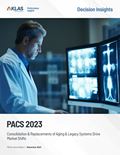
The PACS market is in flux—about one in five organizations interviewed by KLAS in the last two years is planning to replace their PACS, and more report they would replace their system if given the opportunity. This market shift is driven largely by organizations (1) replacing aging/legacy technology with go-forward platforms, (2) consolidating platforms, and (3) continuing to move toward unified enterprise imaging strategies. Organizations replacing their PACS are seeking vendor partners with a vision for the future and a strong commitment to innovation. This report examines 90 recent PACS purchase decisions validated by KLAS between September 2021 and September 2023 to understand why certain vendors are being considered, selected, and replaced in this dynamic market.

Payer organizations are always looking to improve their payment and claims accuracy, and payment integrity initiatives play a large role in that endeavor. Because the work required to create and improve these initiatives is not always feasible internally, payers often use vendor solutions. EXL offers a modular approach to payment integrity that aims to provide deeper insights to payers through transparency and accessibility. This report offers a first look at the experiences of organizations using EXL’s payment integrity solutions.

In September 2023, KLAS hosted the seventh annual Digital Health Investment Symposium (DHIS)—about 200 executive thought leaders and representatives from healthcare organizations, HIT companies, and investment firms attended this strategic retreat to collaborate on important healthcare developments, with a specific focus on the tradeoffs between platforms and point solutions in the healthcare technology stack. This event overview shares insights from the event’s small-group discussions, especially highlighting the pressing challenges of the healthcare technology stack, staffing shortages, and AI.

The annual CHIME Digital Health Most Wired (DHMW) survey program offers essential insights into how healthcare organizations (HCOs) worldwide are using healthcare information technologies (HIT) and practices. Widely known for the annual Digital Health Most Wired recognition awards, the DHMW survey program aims to support healthcare leaders’ decision-making by providing robust benchmarking and trending profiles of digital health usage in HCOs, all the while encouraging HIT adoption via DHMW Level designations.
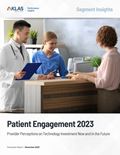
In an increasingly digital world, the healthcare industry continues to face increased costs and labor shortages. Patient engagement technology is top of mind for healthcare organizations as they work to improve the overall patient experience, increase volumes, cut costs, and create more provider efficiencies. , KLAS recently identified patient engagement as a top-three priority for healthcare investment. For this report, KLAS engaged with executives from 93 unique healthcare organizations to better understand perceptions of the patient engagement market, including strategies for addressing challenges and goals today, which vendors are most aligned with provider goals, and future plans for investment to improve patient engagement.
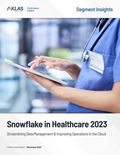
Healthcare organizations need to be able to access the right data to maintain efficient operations and provide high-quality patient care. However, gathering, integrating, and effectively using data from various sources can be complex and time consuming. To address this challenge, many organizations are turning to cloud solutions that streamline data management. Based on insights from 10 US healthcare provider organizations interviewed by KLAS between May 2023 and September 2023, this report examines the customer experience with Snowflake, including the workloads customers are using, achieved outcomes, and vendor performance.

More healthcare organizations are evaluating digital pathology for clinical use, especially as this market’s technology continues to advance and newly developed CPT codes show promise for future reimbursements. Still, digital pathology in the US is nascent—KLAS estimates that fewer than 10% of US organizations have adopted digital pathology for clinical use, and less than 5% of cases are signed out digitally. As a result, organizations interested in digital pathology have questions about how to start and what to expect. To help provide needed insights, this report draws from interviews with 14 digital pathology pioneers who are in varying stages of their adoption journey, sharing lessons they have learned around (1) building a business case for digital pathology, (2) selecting an IMS vendor, and (3) choosing an adoption strategy. View the full report to read more from the early adopters who shared their success stories and adoption details. This is KLAS’ second report on digital pathology in the US; for the 2022 report, click .

Epic’s Payer Platform represents another step for the vendor into the payer realm. The solution is intended to connect payer and provider organizations via open channels of communication beyond faxes and phone calls and to get information to the right places, thus improving efficiency and patient care. This report is a first look at Payer Platform’s performance and the payer experience.
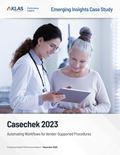
Most hospital executives are unaware that about one-third of total supply expenses and half of procedural supply expenses are managed by supplier sales representatives. The current process creates systemic data silos and limits healthcare organizations’ ability to control and optimize one of the largest supply chain expense categories. Casechek aims to create (1) a smarter, more efficient implant supply chain controlled by the hospital, not the supplier and (2) a seamless, automated ecosystem of healthcare organizations and suppliers. By integrating clinical and financial data into the procurement-to-payment process, Casechek’s solution reduces the supply chain and administrative costs of surgical care. This case study examines early feedback from two respondents at one unique organization live with Casechek.
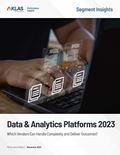
Healthcare organizations manage a plethora of data sets, and they have continual need for consolidated, end-to-end data and analytics platforms that offer strong capabilities (e.g., ability to track and benchmark desired outcomes). Organizations are looking for reporting with digestible metrics that can help staff make better decisions as well as excellent support when implementing and actualizing different use cases. This report examines how many data source types that solutions can ingest, how well solutions deliver results for complex use cases, and how well vendors partner with customers to help them achieve success.

In August 2023, KLAS hosted its first Revenue Cycle Management Summit, where revenue cycle leaders from healthcare organizations and healthcare IT companies came together to share best practices, collaborate on moving the market toward more meaningful automation, and discuss the emerging technology of autonomous coding. Drawing on insights from (1) a pre-summit survey and (2) small group discussions at the summit, this paper shares how attendees are using automation, the challenges they have encountered, and best practices for achieving short- and long-term solutions.

Healthcare organizations are facing unprecedented financial pressure; several macroeconomic factors—including the COVID-19 pandemic, inflation, and staffing shortages—have forced organizations to work around decreased revenues and increased costs. At this critical time, organizations are looking to consulting firms to help improve their financial performance and circumnavigate obstacles. KLAS’ 2020 examined how firms were providing guidance to healthcare organizations during the early months of the pandemic. Now, roughly three years later, this report offers an updated look at the types of work consulting firms are doing and the outcomes clients are achieving in this financially challenging environment.
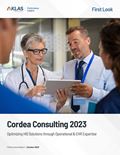
HIT staffing and IT advisory services help healthcare organizations ensure efficient operations, enhance patient care and safety, protect data security and privacy, comply with regulations, and make cost-effective decisions. Cordea Consulting uses their operational expertise and experience with Epic and Oracle Health (Cerner) products to help organizations optimize their HIT solutions. This report offers a first look at the Cordea Consulting client experience.
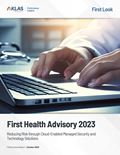
From January 2023 to July 2023, there were 395 reported healthcare security breaches. The number of ransomware cases is rising, making it critical for healthcare organizations to be able to identify, monitor, and secure all network devices. First Health Advisory’s services address risk holistically by offering digital health risk assurance (including medical device and IoT/IoMT management). This report offers a first look at client experiences with the firm’s services.

Patient data sharing has quickly grown much more important for payer organizations, and recent CMS mandates have made it a necessity for all. Recognizing the burden on payers, Onyx has created a platform that transforms healthcare data into a shareable, compliant format requested by the payer. This report presents a first look at the experiences of Onyx payer customers.

Tumor board conferences play a crucial role in the comprehensive, effective management of cancer patients. These meetings involve a multidisciplinary team that collectively evaluates complex cancer cases and collaborates to make informed, personalized treatment decisions. The absence of tumor board technology can hinder effective communication, collaboration, data sharing, and decision-making, which potentially leads to delays, inaccuracies, and suboptimal care. Roche aims to solve these potential problems with navify Tumor Board. This report offers an initial look at customers’ experiences with this product.

For healthcare organizations, point-of-care (POC) technologies are becoming increasingly important because they can connect users with results rapidly, facilitating quick professional decision-making and better preparedness. However, these technologies must be properly integrated into workflows to avoid issues around accuracy, data management, and overreliance on rapid results without comprehensive assessments. Roche aims to help organizations tackle these issues with navify POC Operations

Medical laboratory services deal with intricate data from many varied sources. The complexity of the information and multiple data sources can increase time for operations in a lab. navify Lab Operations

Payers take on financial risk for members and pay for healthcare expenditures based on various plans and reimbursement types. Due to the complexity of reimbursement contracts, many factors (e.g., coding and billing errors, fraud, waste) can contribute to payers sometimes underpaying or overpaying provider organizations. Payment accuracy and integrity solutions help payers make accurate payments and recover losses when overpayments and fraud occur. This report—KLAS’ first on this market—aims to identify the main capabilities these solutions provide and show early findings on customer satisfaction with vendors’ performance.
